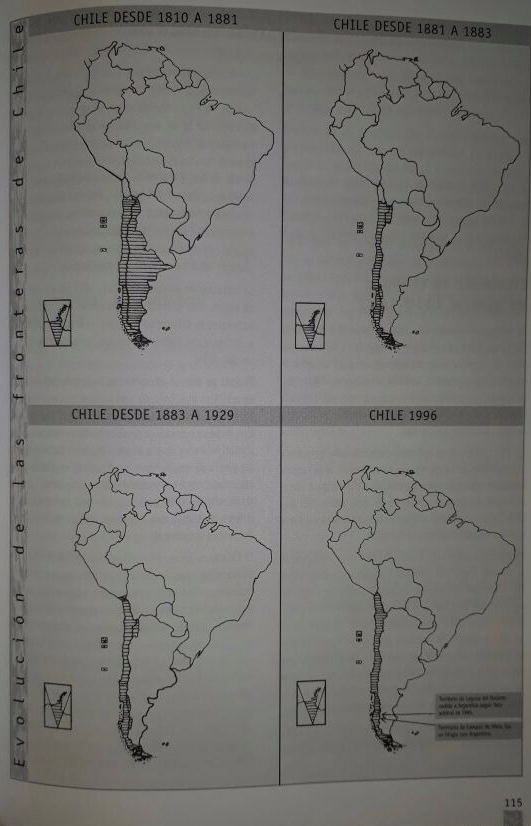Historical Immigration to Chile: Overview of the 19th and 20th Centuries
Like the United States, Brazil and Argentina, and many other countries in the New World, Chile is a country deeply indebted to immigration. In the last few decades, the great majority of immigrants have come from Peru, Bolivia, Argentina, Columbia, and, to a lesser extent, Ecuador, Brazil and Mexico. However, in the last five years especially, these countries have been nearly eclipsed by the combined influx of hundreds of thousands of refugees fleeing Maduro's Venezuela, along with hundreds of thousands of poor people from Haiti and the Dominican Republic. They are all coming to Chile to try to find a better life (joining the ranks of poorer Peruvians, Bolivian and Colombians that have continued their influx). Chile's 21st Century has been marked by massive inflows of immigrants. Not all of these folks stay, of course. Perhaps a third of them leave, after having worked in Chile for a year or two.

Source: Samuel Vial M., 1998, Historia y Geografía de Chile, page 115, 5th ed. Ediciones Universidad Católica.
Just as the reach of Chilean territory has changed over the past two centuries, mainly due to wars with the combined forces of Bolivia and Peru in the 19th Century, and treachery or squabbles with Argentina (in the image above notice how Chile reached to the Atlantic for the first seventy years of its existence), so has the mixture of its people. A lot has happened since Pedro de Valdivia arrived as a Spanish conquistador (from southwestern Spain), along with 150 men, and founded the cities of Santiago, La Serena, Valparaíso, Concepción and Valdivia during the 1540s.
There is a lot of questionable history, if not popular mythology, that states that many of Valdivia's men were prisoners in Spain who were given a shot a freedom by fighting under the conquistador. Unlike imperial penal colonies like Australia that received 160,000 prisoners, there is little evidence to corroborate the apparently fictitious claim that Chile's founders were criminals and, by extension, a genetic reason exists for why so many Chileans are liars, thieves, adulterers and cheaters. If the story were true, it seems that there would be significant historical evidence to be found. There is not.
What is clear is that these men from southern Spain (regions of Andalusia and Extremadura mainly) mixed with the native American (female, obviously) population with whom they constantly fought and attempted to subdue. While many more Spaniards would eventually make their way to Chile, especially from the Basque country, but also from Catalonia, Valencia, Galicia and elsewhere, the Spanish race was hardly left "pure" during the centuries of Chile's imperial subjugation (1540-1810). From the time of Chile's complete independence from Spain, it was comprised of a largely mestizo race. Sure, a few Portuguese, Italians, English, Croatians, French and other Europeans had also been added to the mix during the colonial period, but their influence was hardly significant.
However, after independence, the new Chilean government made a smart policy move. Like New York during the same period, several ports were made free ports, starting in 1820, attracting many Europeans (along with a few Chinese Coolies in the north) who sought their fortunes in saltpeter, iodine, gold, silver, wines, retailing and sheep ranching. Valparaíso became especially important, and large businesses grew up in that port to warehouse goods for transient foreign ships securely, making sea voyages more profitable and keeping goods safer on land rather than in a ship's hull. Valparaíso blossomed and quickly became the most important port on the Pacific Ocean. It was a tax haven, with secure property rights and a wonderful climate.
In 1845, the government also instituted a program to recruit Europeans to settle areas of the south central part of the country. It mainly took off a decade later, placing settlers from Lebu-Angol-Victoria (north of Temuco) down to Puerto Montt and the island of Chiloé, what are today the lower 8th, 9th, 14th and 10th regions of Chile. This brought in several important waves of German immigration, but also poorer Czech, Austrian and Swiss settlers. Meanwhile, Valparaíso swelled with British, Irish, Italians, Swiss, Germans, French, Croatians, Americans and Spaniards, along with a smattering of other nationalities, from the mid-19th Century through the time that the Panama Canal opened and World War 1 commenced in 1914. Significant immigration did not stop until the 1930s, when the saltpeter crisis occurred.
Smaller towns like Punta Arenas swelled with Croats, British and some Portuguese looking for gold and eventually doing well with massive sheep ranches in the late 19th Century, while Iquique and Antofagasta (after Chile won those territories in the War of the Pacific, ending in 1883) became a saltpeter mining magnet for Croats, British and some Italians, Swiss and Chinese.
I am no historian, and the table below is simply a summary of what I read in sources that came from internet searching and Wikipedia. But I hope one can get an idea about the significant immigrant groups that made their way to Chile. This country is hardly Brazil, Uruguay or especially Argentina, whose European immigration numbers completely dwarf Chile's. Still, European, and to a lesser extent Middle Eastern (Mediterranean, largely non-Muslim, mostly Orthodox or Jewish), immigration significantly impacted Chile's ethnic and racial makeup. Please note, too, that I leave out many minute details in this sort of presentation. For instance, I do not mention the Danish engineers that came to Valparaíso and Antofagasta, or the first Baptists to settle in Chile, in the lower 8th and 9th regions from 1892 to 1896 (Contulmo, Victoria, Quillén station, etc.), having come from Germany. One other thing: when considering the figures in the table, note that Chile's population was only 3.2 million in 1907.

If one plans to live in Chile, it pays to know at least something about the country's history. I hope this article helps facilitate that objective.


I am impressed see your maps..
Thanks! I hope they help give some insight that is little known in the Northern Hemisphere.